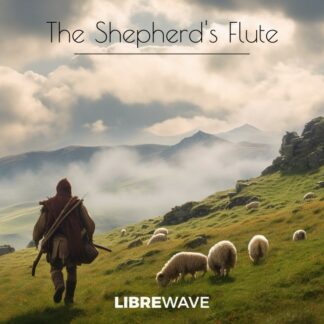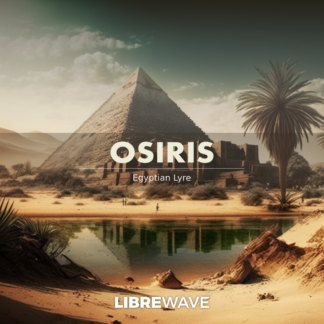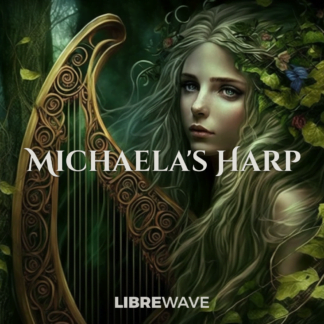You’re just three steps away from firing up your new instrument for the first time.
1. Choose a password
If this is your first purchase from Libre Wave you’ll soon receive an email confirming your Libre Wave account creation and a link for you to set a password.
It could take up to an hour for the email to come through but usually it’s very quick. Check your junk/spam folder if you don’t see it in your inbox. Be sure to add @librewave.com to your email whitelist.
2. Download Rhapsody
Rhapsody is Libre Wave’s sample library installer, manager, and launcher. Click the button below to go to the Rhapsody download page and grab your copy for free.
3. Install Your Instrument or Plugin
Here’s a video showing the download and installation process for a Rhapsody instrument. Or keep reading if you prefer written instructions.
1. Once Rhapsody is installed, open it up and log in with your Libre Wave account credentials (email/password).
2. Rhapsody will then synchronise with the Libre Wave server and you should see the cover image for the instrument(s) you purchased. There will be a green download button below this image. Click the button.
3. Choose a location to install the samples and click install. Then just wait for it to complete, it shouldn’t take long.
4. After the installation has finished you can click on the instrument’s cover image to launch the library.
Troubleshooting
If you’ve purchased a non-Rhapsody legacy product, such as O’Malley’s Irish Whistles, please visit this page.
If the download seems to be taking a little while to start just wait it out. It might be that the server is busy so give it a few minutes.
If you’re trying to install from within the plugin version of Rhapsody and it doesn’t seem to be working, try the standalone app version instead. If all else fails go with the manual installation method demonstrated in the video above.
If you use a firewall or anti-virus, make sure Rhapsody is whitelisted and allowed to access the internet.
There are more instructions on the Rhapsody page.
The process for installing effects plugins, such as Sordina, is exactly the same as installing instruments. However they cannot be launched from Rhapsody itself and must be loaded separately within your DAW, just like any other plugin.
If you need further assistance you can open a support ticket through your Libre Wave account dashboard and I’ll get back to you as quickly as possible.
Explore more from Libre Wave
-
%27%20fill-opacity%3D%27.5%27%3E%3Cellipse%20fill%3D%22%23283900%22%20fill-opacity%3D%22.5%22%20rx%3D%221%22%20ry%3D%221%22%20transform%3D%22matrix(310.09188%20-77.8833%2020.59394%2081.99465%20176.7%20289.7)%22%2F%3E%3Cellipse%20fill%3D%22%23e6e2fc%22%20fill-opacity%3D%22.5%22%20rx%3D%221%22%20ry%3D%221%22%20transform%3D%22matrix(11.20333%2095.5105%20-176.4617%2020.69887%20154.2%2079.8)%22%2F%3E%3Cellipse%20fill%3D%22%23293400%22%20fill-opacity%3D%22.5%22%20rx%3D%221%22%20ry%3D%221%22%20transform%3D%22rotate(-100.7%20267.7%2032.8)%20scale(34.10346%2093.86898)%22%2F%3E%3Cellipse%20fill%3D%22%23646f11%22%20fill-opacity%3D%22.5%22%20rx%3D%221%22%20ry%3D%221%22%20transform%3D%22matrix(20.08432%2042.6616%20-291.99428%20137.46569%20183%20257.1)%22%2F%3E%3C%2Fg%3E%3C%2Fsvg%3E) The Shepherd’s Flute£19.99
The Shepherd’s Flute£19.99 -
%27%20fill-opacity%3D%27.5%27%3E%3Cellipse%20fill%3D%22%23d6e4f6%22%20fill-opacity%3D%22.5%22%20rx%3D%221%22%20ry%3D%221%22%20transform%3D%22rotate(13.4%20-356.3%20176.1)%20scale(90.8341%2051.93622)%22%2F%3E%3Cellipse%20fill%3D%22%23ffb776%22%20fill-opacity%3D%22.5%22%20rx%3D%221%22%20ry%3D%221%22%20transform%3D%22matrix(12.37093%2050.74302%20-164.09138%2040.00476%20239.4%20311)%22%2F%3E%3Cellipse%20fill%3D%22%23584602%22%20fill-opacity%3D%22.5%22%20rx%3D%221%22%20ry%3D%221%22%20transform%3D%22rotate(75.5%20-118.4%20183.3)%20scale(59.38553%20205.61829)%22%2F%3E%3Cellipse%20fill%3D%22%2308152d%22%20fill-opacity%3D%22.5%22%20rx%3D%221%22%20ry%3D%221%22%20transform%3D%22rotate(-172.9%20128.3%201.8)%20scale(157.4928%2036.15947)%22%2F%3E%3C%2Fg%3E%3C%2Fsvg%3E) Osiris£24.99
Osiris£24.99 -
%22%20transform%3D%22translate(.6%20.6)%20scale(1.26563)%22%20fill-opacity%3D%22.5%22%3E%3Cellipse%20fill%3D%22%23575757%22%20cx%3D%22130%22%20cy%3D%2214%22%20rx%3D%22255%22%20ry%3D%2224%22%2F%3E%3Cellipse%20fill%3D%22%23595959%22%20rx%3D%221%22%20ry%3D%221%22%20transform%3D%22matrix(32.92663%202.15166%20-1.3172%2020.15686%20120.4%20246.7)%22%2F%3E%3Cpath%20fill%3D%22%231b1b1b%22%20d%3D%22M269%2038l-285-2%20202%20235z%22%2F%3E%3Cpath%20fill%3D%22%23050505%22%20d%3D%22M75%2032h71v6H75z%22%2F%3E%3C%2Fg%3E%3C%2Fsvg%3E) Sordina£74.99
Sordina£74.99 -
%27%20fill-opacity%3D%27.5%27%3E%3Cpath%20fill%3D%22%23555457%22%20fill-opacity%3D%22.5%22%20d%3D%22M233.5-3.2l110.1%20208.9-363.2-43z%22%2F%3E%3Cellipse%20fill%3D%22%230e0d10%22%20fill-opacity%3D%22.5%22%20rx%3D%221%22%20ry%3D%221%22%20transform%3D%22rotate(-73.5%20246.4%2052.5)%20scale(79.09201%20162.97039)%22%2F%3E%3Cellipse%20fill%3D%22%23757575%22%20fill-opacity%3D%22.5%22%20rx%3D%221%22%20ry%3D%221%22%20transform%3D%22rotate(155.4%2096.6%2077)%20scale(27.89092%2051.68291)%22%2F%3E%3Cellipse%20fill%3D%22%234e6000%22%20fill-opacity%3D%22.5%22%20rx%3D%221%22%20ry%3D%221%22%20transform%3D%22matrix(-17.61775%2035.8724%20-30.011%20-14.7391%20319.4%20252.5)%22%2F%3E%3C%2Fg%3E%3C%2Fsvg%3E) Michaela’s Harp£39.99
Michaela’s Harp£39.99




